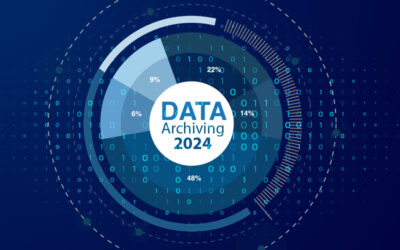Preserving ancient documents is a fine art. Old documents have priceless, historic value. They need to be preserved for posterity, and document scanning services have an integral part to play here. Scanning physical documents is the first step towards digitizing them.
The authenticity of historic facts and details can only be verified and confirmed by examining documents. With the passage of time, physical documents get damaged easily. They need to be scanned and digitized so that even if various factors conspire to destroy physical documents, what they contain can be accessed anytime.
Advantages of Digitizing Historical Documents
Digitization is the key to preservation. Here’s why:
- Digitization helps in easy indexing and searching of documents. A digitized storage system enable users and curators find the document or details they need quickly, provided they are cataloged with the correct dating and naming systems.
- With digitized systems, you can also set high-tech security features such as encryption and firewall technology to secure the precious documents and keep them from troublemakers.
- Digitization minimizes data loss. What’s stored digitally is stored for posterity. Important historical data, records, statistics, photographs and illustrations are here to stay.
- With digitization, unclear documents and illustrations can also be enhanced for visual quality.
- Digitization also helps free up storage space.
Why Communities Must Eagerly Pursue Digitization
Communities particularly need to preserve their history. That’s why microfilm conversion services are so important. Let’s not forget that research projects benefit significantly from digitized documents. While researchers take the effort to visit libraries to examine the historical physical documents, they need digitized versions for quick access.
Digitization has its challenges though, and they arise during the scanning process. As you know, it all starts with scanning. While experienced scanning companies leave no stone unturned to ensure accurate scanning, they also need to ensure the preservation of the original document all through the scanning process. Not all historic documents can be scanned easily, since they could be in a totally fragile condition. Setting the standard is the US Library of Congress (LOC).
Digitization and Scanning Guidelines by the Library of Congress
The LOC has set certain guidelines for digitizing materials from its library:
Basic Questions to Ascertain the Purpose
The first step is to ascertain the purpose of the whole digitization endeavor. Who will be using the digital versions? What would be the effect of the digital version on the original item? How would the access and storage of these digital files be?
Once these matters are discussed and ascertained, the IT specialists create project workflows and assess its requirements. Let’s look at the LOC guidelines in detail:
Preservation Assessment
Here’s what the preservation assessment involves:
- How safe would the original document be all through the digitization product workflow? With the right scanning equipment, can the damage to the original document or collection be minimized? What physical supports can be provided for treating the collection? How can the digitization be carried out in a timely yet cost-effective manner without damaging the collection?
- The condition of the original document or collection of documents or books that needs to be digitized must be identified to realize what physical damage has happened. Appropriate care should be taken to preserve it.
- Are there folds or creases that obscure the text? Are the tears in the paper obscuring the text, and are they longer than the quarter of an inch? Do the books have spines that are detached or any loose joints? Is the housing acidic or causing any other damage to the books or documents? Is the collection in a cumbersome format, such as scroll, parchment, accordion book, etc.?
Scanning Guidelines
Document scanning companies awarded with the digitization contract also need to follow certain guidelines:
- The scanning equipment they use must contain tools for limiting exposure to light and heat.
- They cannot use form feed equipment for scanning fine art, fragile documents, manuscripts, drawings, photographs and other such materials of archival value.
- Some materials may be of extraordinarily large size and, as a result, must be accommodated in scanning equipment containing a large scanning bed, larger than the object that is to be scanned.
LOC Believes Some Documents Are Too Damaged to Be Digitized
Unfortunately, some items just can’t be digitized because they are way too fragile. The Library of Congress has ascertained that, while the preservation specialists can discuss specific cases with the curator, there are some factors that would require certain materials to be excluded from the process. These include:
- Acidic paper
- Fragile and torn paper
- Paper that is damaged significantly enough to miss major sections
- Paper sticking to something
- Documents containing ribbons, seals, medals or other 3D objects attached to them
- Books having missing pages or leather that has deteriorated significantly
- Documents such as scrolls containing old image or text formats, etc.
Experienced companies providing comprehensive data conversion services go to great lengths to not just meet, but also exceed, benchmark standards. They can be trusted with not just historic document conversion and digitization, but also various data services for businesses and institutions.




